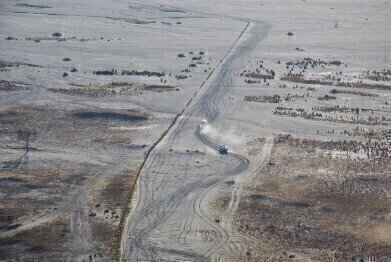Fuel for Thought
What are Tar Sands? Introducing the Basics
Feb 07 2015
The global need for fuel sources has led the energy industry to innovate new methods of extraction in the face of adversity, and there are few sources of energy as adverse as tar sands. These naturally occurring areas (also known as oil sands) consist of sand, clay, water and, most importantly, carbon-heavy bitumen. The bitumen, soaked into the mixture is tar-like, hence the name, and therefore does not flow freely. This makes it extremely difficult to extract.
Russia houses some of the largest tar sands in the world but it’s the rich, forest-covered Canadian sands in Alberta that play the biggest part in the global energy market, providing North America with barrels of crude oil and petroleum coke for export. It’s estimated that there are over 170 million barrels of crude oil soaked into Canada’s tar sands and itching to be turned into much needed energy.
How is oil extracted from tar sands?
The extraction of oil isn’t a pretty process. The tar sand is covered in a thick forest that must be completely destroyed before the sand can even be reached. Once the trees are bulldozed, a thick layer of soil and peat has to be removed from the surface to uncover the sand. Trucks and mining equipment then ferry the oil-addled sand to a refinery where it is mixed with hot water to loosen the bitumen from the sand-clay mixture. Large amounts of heat, pressure and chemical catalysts transform the bitumen into low-density crude oil that can be transported in pipes and refined for use as fuel and other products.
What is the environmental impact of mining tar sands?
The energy and resources needed to mine oil from tar sands is extensive. The process requires a huge amount of water and creates some nasty by-products including nitrogen oxide and sulphur dioxide, and the amount of greenhouse gases produced are 20% higher than during normal oil refinement.
Although the tar sands are deep, current technology only allows surface mining. This means that large areas of natural habitat have to be destroyed for extraction to take place. Methods for mining deeper sands are being developed, but are not without drawbacks. Steam Assisted Gravity Drainage involves pumping steam deep into the sands to loosen the bitumen which can then be pumped to the surface for treatment. The sand, clay and water removed during drainage, along with toxic chemicals used in the process, are sent to huge reservoirs, called “tailings”, which birds and other animals often mistake for natural ponds with fatal results.
The energy industry is hopeful that future innovations make the process less damaging to the environment, but with energy being one of the most valuable assets available in the modern world, the impetus is on exploiting potential fuel sources as quickly as possible. And that means Canada might as well be sitting on a gold mine.
Greenhouse gases
According to the Pembina Institute, Tar sands actually contributed approximately 7% of Canada's total greenhouse gas emissions – which amount to 48 million tonnes – in 2010. Canadian Natural Resources Ltd. (CNLR) is hoping to reduce emissions of greenhouse gases from its tar-sands operations by building an algae-based processor. The process will use the carbon dioxide created by the tar-sands project to grow algal biomass. This biomass will then be processed into different components - biodiesel, fertilizer and livestock feed. The companies involved hope to show that similar process plants are worthwhile investments for other companies and industries, in order to reduce emissions and to create other products.
Digital Edition
PIN 25.1 Feb/March
March 2024
In This Edition Safety - The technology behind the ION Science Tiger XT - Safety with ammonia and LOHCs as hydrogen carriers Analytical Instrumentation - Discussion on new tribology te...
View all digital editions
Events
Apr 22 2024 Hannover, Germany
Apr 22 2024 Marrakech, Morroco
Apr 22 2024 Muscat, Oman
Apr 22 2024 Rotterdam, Netherlands
Apr 23 2024 Singapore


















